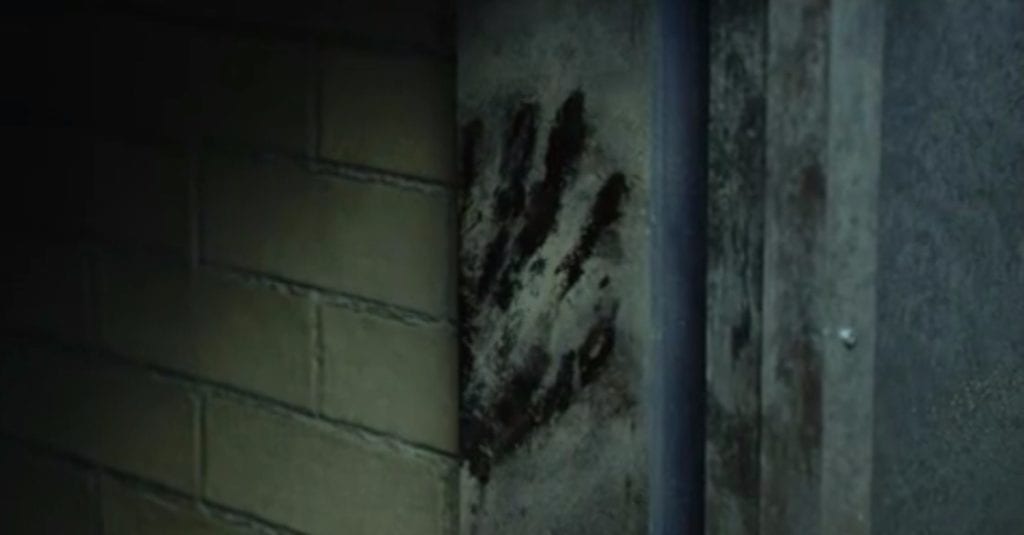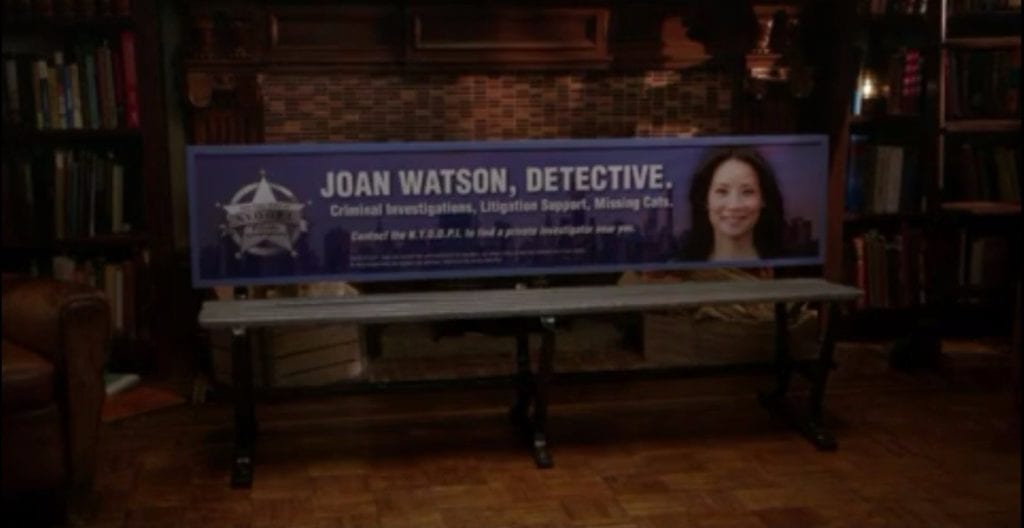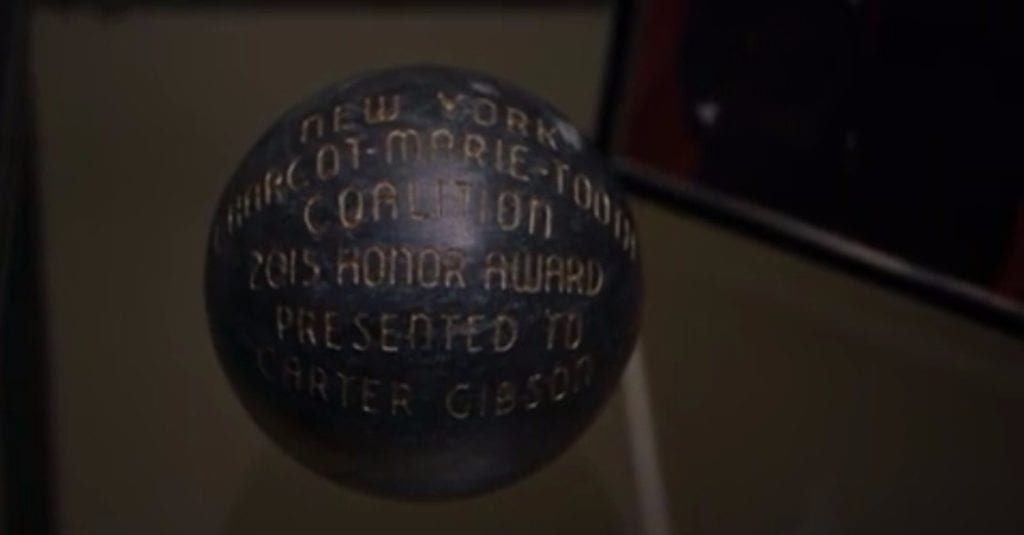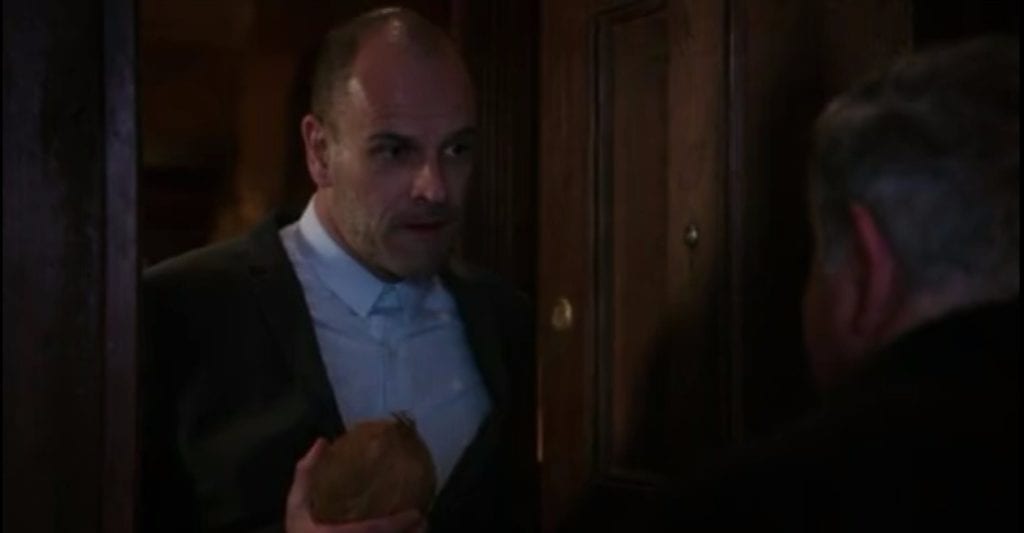One of my pet peeves in television shows is when a character experiences some sort of trauma – physical or emotional – in one episode and then in the next episode, this trauma is not acknowledged or dealt with. (Cough cough Supernatural cough.) In the last episode, Sherlock was assaulted by Shinwell. This episode treads the line between totally ignoring it and satisfactorily coming to terms with it.
The episode opens about a week after the assault. Sherlock and Joan are discussing their ways of coping. Lacking interesting cases, Sherlock has distracted himself, in, um, physical activities, whereas Joan has cleaned and taken simple cases. They’re both upset about what happened, but Sherlock, surprise surprise, mostly refuses to talk about it or acknowledge his feelings. Neither feel that there’s much they can do about the issue since they have no way of proving Shinwell’s guilt.
Perhaps as a visual expression of their inability to do anything more than talk, the show quickly moves us on to the crime of the week. Two workers in a crematorium realize that an incinerator that should be clean has remains in it that shouldn’t be there. A handprint just inside the door indicates that these whoever it is was alive when they went in. Just typing that makes me shudder with horror.
Even worse, when the ME (now sporting a cool, and by cool I mean terrible, mustache) examines the remains, he realizes that there were in fact two bodies. Both are male. There are signs that one wore an orthopedic brace. Sherlock finds a class ring as well and realizes that he recognizes it. It belonged to a Fred Kirby, who Sherlock calls “the worse private investigator in New York.”

Jolockbell goes to Kirby’s office to look for clues. Kirby had one employee, a driver who has also gone missing. They assume this must be the second vic. They also find several restraining orders filed against Kirby. Sherlock uses his keen investigating skills to determine that the orders all originate from people who are related to victims of a shooting spree. And by keen investigating skills, I mean that he looks it up on the internet.
The shooting spree in question happened at a courthouse. A group of new citizens were present to be sworn in when the husband of a woman who worked at the courthouse came and shot the courthouse up, killing four.
However, this tragedy happened three decades ago, so the connection to Kirby’s death is initially hard to see. Sherlock decides to investigate at the courthouse for more details while Joan goes to speak to the first woman to file a restraining order.
As Sherlock heads out of the precinct, he’s interrupted by a man who seems to recognize him. The man introduces himself as Louis Garmendia, the president of the New York Order of Private Investigators (or…..NYOOPI). Kirby was a member, and Garmendia is glad that one of NYOOPI’s own members is investigating the death. Sherlock is obviously surprised to hear that he’s a member.
Joan, meanwhile, is speaking to Virginia and Houston Spivey, the wife and son of a former bailiff at the courthouse where the shooting occurred. The bailiff was wounded heroically stopping the shooter. He survived the shooting only to die of cancer later. Virginia Spivey tells Joan about the memorial she organized at the courthouse before turning to the topic of Kirby. She and the other families put out restraining orders against Kirby because he was harassing them for items that belonged to the dead and injured of the shooting. She thought he was looking for items to sell as “murder-obilia,” which is a thing I had never heard of but have no doubt really exists. But Virginia is certain that none of the families would have considered Kirby’s mild harassment to be worth killing over.
Because Sherlock is completely extra, when Joan returns home she finds a bench in the brownstone advertising her services as a detective and member of NYOOPI. Joan is not having it and demands to know what Sherlock has against NYOOPI. According to Sherlock, the organization is an offense because anyone is permitted to join so long as they pay membership fees. The phrase “riff raff” is used. Joan accuses Sherlock of being a snob, and he quite literally puts his nose up and says that someone has to be.

Joan is an adult and brings the conversation back to the case. She looked up some murder-obilia sites and found no evidence that Kirby was active on them. So why did he want the belongings of the shooting victims? Sherlock has a theory, and things briefly get really weird, Elementary style.
When new citizens were sworn in at this particular courthouse, it was traditional to give them small copies of the constitution. In the memorial that Virginia Spivey set up at the courthouse, the blood splattered copies of the four men that were killed were put on display. But when Sherlock visited, he realized that the copies on display were fakes and the original copies were missing, presumably stolen by Kirby. Why? To test the blood for radioactivity, of course.
The courthouse shooting, it turns out, happened shortly after another major historical event…the Chernobyl nuclear meltdown. This tragedy is usually considered to have been accidental, but certain conspiracists on the internet apparently believe that the US paid four Russian saboteurs to make it happen. These men were then offered US citizenship in exchange for their service. Conspiracy theorists would have you believe that the four men killed in the courthouse shooting were the same men, and that the shooter was a rogue US agent.
Sherlock doesn’t believe any of this. But what matters is whether or not Kirby believed it enough to gather blood samples and get them tested.
Joan remembers that when she went through Kirby’s financials, he had made several discreet payments to a man who works in a blood testing lab. She and Sherlock pay this man a visit.
He has the samples, sure enough, and ran tests on them per Kirby’s request. He even shows them the results, after a little, er, persuasion on Sherlock and Joan’s part. But it wasn’t about radioactivity at all. In fact, he’s baffled when they bring it up. He was, instead, running paternity tests for a man called C. Gibson. Unfortunately, the samples were too old and corrupted to get any conclusive results, nor does he know who C. Gibson is.
Just like that, the Chernobyl storyline is dropped for the rest of the episode. I honestly don’t know how to feel about it. On the one hand, why on earth would the writers introduce a concept like that only to drop it in the very next scene? One of the most basic rules of writing is to only introduce ideas that are relevant to the story, and this was not relevant. It was also a totally melodramatic idea, and I’ve criticized Elementary before for going too far down the hole of conspiracy theories. But on the other hand, I find myself pondering the idea that that was the exact point. This sort of conspiracy is the kind of thing that does happen on this show, as proved by the fact that Sherlock and Joan were both instantly willing to believe it. Yet in the end, it was all in their heads and the truth was much more ordinary. Were the writers making fun of themselves? If they were, they didn’t make it as clear as possible…but it still made me laugh pretty hard.
Neither Sherlock nor Joan has any idea who C. Gibson is, but he’s their best and only lead. They return to Kirby’s office to try to find a full name. Sherlock has another agenda as well; looking for more information on NYOOPI. He’s decided to try and take them down. Joan, clearly out of patience, accuses him of projecting his feelings about Shinwell onto NYOOPI. Sherlock doesn’t even bother to deny it. He’s so emotionally healthy you guys.
C. Gibson turns out to stand for Carter Gibson. But that’s an assumed name; his birth name was Carter Dunwhitty. The reason he changed his name is clear enough. His mother was married to the shooter in the courthouse tragedy. No wonder he was hoping someone else was his biological father.
When they attempt to apprehend Gibson in his apartment, they find a crime scene instead. But just when it seems clear that Gibson must be the murderer, Sherlock finds a new surprise. In Gibson’s room is an orthopedic brace, just like the one they found earlier…in the cremated remains. Gibson is the second victim.

Canvassing the neighborhood reveals that neighbors heard a loud bang around midnight, but Sherlock doesn’t think the murder was committed with a gun. A large stone orb is missing from Gibson’s apartment, and the blood splatter indicates that was the murder weapon. Interestingly, the stone statue was an award that Gibson had won for raising awareness of a disease called CMT. Gibson had the disease himself, which was why he’d needed the brace.
CMT is a genetic disease that passes along the paternal line. But when they reach out to Gibson’s surviving family, they discover that neither his mother nor his supposed father had CMT in the family. This is proof that the courthouse shooter really wasn’t his father. Joan theorizes that the shooter must have realized this and decided his wife was cheating on him with someone from the courthouse, and that was the motive behind his rampage. If they can find out who else in the courthouse that day had CMT they can discover Gibson’s biological father.
Meanwhile, the president of NYOOPI visits Sherlock again, this time at the brownstone. He knows that Sherlock is investigating NYOOPI and would like to know why. Sherlock calmly explains his grudge against them. Surprisingly, Garmendia agrees. He says that he’s been trying to change the organization and improve the members and asks Sherlock to step off, but Sherlock makes no promises.
Throughout the entirety of this serious conversation, Sherlock is carrying a coconut. Neither of them acknowledges this. I’m a simple girl with simple pleasures, so this amused me to no end.

The coconut turns out to have a purpose, and also a name. Mr. Coconut. Sherlock draws a face on him, and also fills him with a liquid meant to resemble blood. He then smashes him with a bowling ball. In Joan’s room. He’s attempting to replicate the unique blood stains from the crime scene, in which blood was flung several yards across the room. When he can’t get the blood to splatter as far, he argues that this proves that the man who assaulted and ultimately killed Kirby and Gibson must have had a powerful throwing arm.
This proves to be the key to the case, so I shall say no more on that note. But I will say that once again, they managed to catch me by surprise in terms of who the murderer was. I thought I had figured the who – and the why – out, but although I was close, I was indeed wrong. I love being surprised. The case has a few more difficulties in store for the detectives, but a eureka moment on Joan’s part saves the day and catches the criminal. I also love when Joan is the one to ultimately solve it.
In the final scene, Joan is again confronted with her bench, but finds that it no longer claims her as a member of NYOOPI, but instead ESOOPI, Empire State Order of Private Investigators. Sherlock worked with Garmendia to put positive changes in effect at NYOOPI and to change the name. Now, ESOOPI will accept anyone…who can pass a rigorous test of Sherlock’s own devisement. Joan is unimpressed, but Sherlock seems happy, so I think we’re supposed to believe that he’s successfully dealt with his feelings about his assault. I’m not so convinced.
Okay, I admit it, I just really wanted to see Joan comfort Sherlock.

